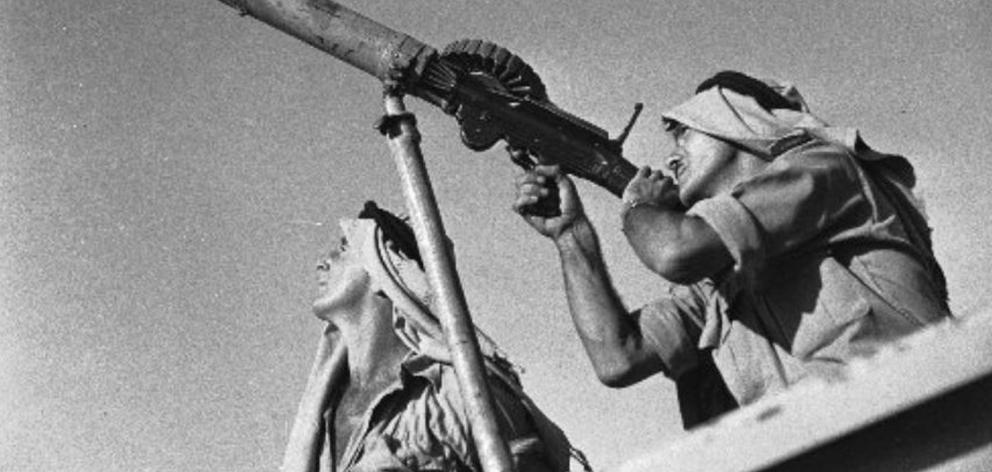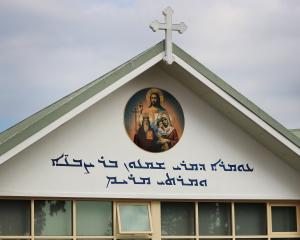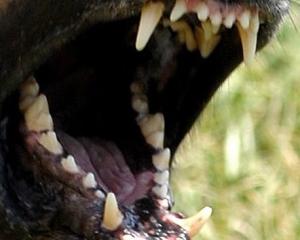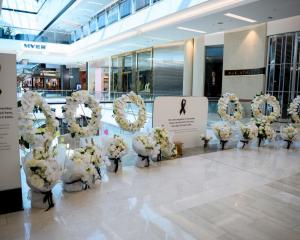
Polish daily newspaper Gazeta Wyborcza reported last month two "skeletons of prisoners from New Zealand" had been found in the Lower Silesian village of Wierzbowa in August by the Institute of National Remembrance's Search and Identification Bureau.
"They were likely commandos from the elite Long Range Desert Group, a World War II-era desert group", Gazeta Wyborcza reported.
"Locals in Lower Silesia have always talked about a lone grave of soldiers near Wierzbowa."
Long Range Desert Group members carried out clandestine operations behind enemy lines, launched hit-and-run raids and gathered intelligence on German and Italian targets, with Kiwi recruits favoured by the group's British founder, Major Ralph Alger Bagnold, because of their toughness and ability to repair trucks on their farms.
World War I and II remains were still found on a regular basis, although less common for those of New Zealanders, Defence Force heritage commemoration and protocol director John McLeod said.
"This is the first we are aware of this find and will certainly look at it. Our first step has been to ask the Ministry for Culture and Heritage to check with the Commonwealth War Graves Commission [CWGC] whether they are aware of the information."
The commission, an intergovernmental organisation of six independent member states which marks, records and maintains the graves and places of commemoration of Commonwealth military service members who died in the two world wars, is the organisation which takes custody of historic war remains after they've been identified as such by local authorities.
They then begin the process of identification.
Manatū Taonga Ministry for Culture and Heritage had contacted the commission, and efforts were underway to find out more, Pou Mataaho o Te Hua, deputy chief executive delivery Neill Atkinson said.
"CWGC has been made aware of these reports and a representative in Poland will contact Instytut Pamięci Narodowej (IPN - Institute of National Remembrance).
"The CWGC will provide the New Zealand Government with more detailed information as soon as practicable. As soon as we receive more information we will provide you with an update."
If the remains were found to be those of New Zealanders they would be "appropriately interred" in a commission cemetery, said McLeod.
"If there is an individual identification we will try and identify living descendants of the individual."
Information about the possible existence of the grave was given to the Department Commission for the Prosecution of Crimes against the Polish Nation in Wrocław by a local history enthusiast, the department prosecutor Konrad Bieroń told Gazeta Wyborcza.
"The place he pointed out was searched. The accounts said that three bodies had been buried there. Eventually, we found skeletons of two people."
A work camp connected to German prisoner of war camp Stalag VIIIA, where New Zealanders were among 30,000 Allied prisoners interred in the camp throughout the war, was based near where the remains were found, Gazeta Wyborcza reported.
"Work committees called sub-camps existed outside the main headquarters … one such sub-camp was Arbeitskommando 10001. It operated in the village of Wierzbowa.
"Among them were commandos from the fine troops of the Long Range Desert Group … it is known that in Wierzbowa the New Zealand captives were kept in the village common room.
"Altogether there were 45 men there. They worked on maintaining the nearby Berlin-Zagań-Legnica-Wrocław railroad line."
Gazeta Wyborcza also reported that hours before the work camp was liberated by Soviet Union soldiers in 1945, German soldiers supervising the prisoners led them to the railroad station, ordered them to escape and then fired on them, with "several people killed" and others hiding until the Soviets arrived.
They found the names of four New Zealanders who worked in the Long Range Desert Group commando and died, Bieroń said.
The remains had been taken to the Department of Forensic Medicine in Wrocław, where they would be checked for injuries and genetic profiling would take place, he said.
It wasn't clear in the Gazeta Wyborcza report whether this would involve the Commonwealth War Graves Commission.
"These were young boys, who are unlikely to have started families yet ... but maybe some of their distant relatives are still alive", Bieroń said.
"The important thing for us is to restore their identity."












